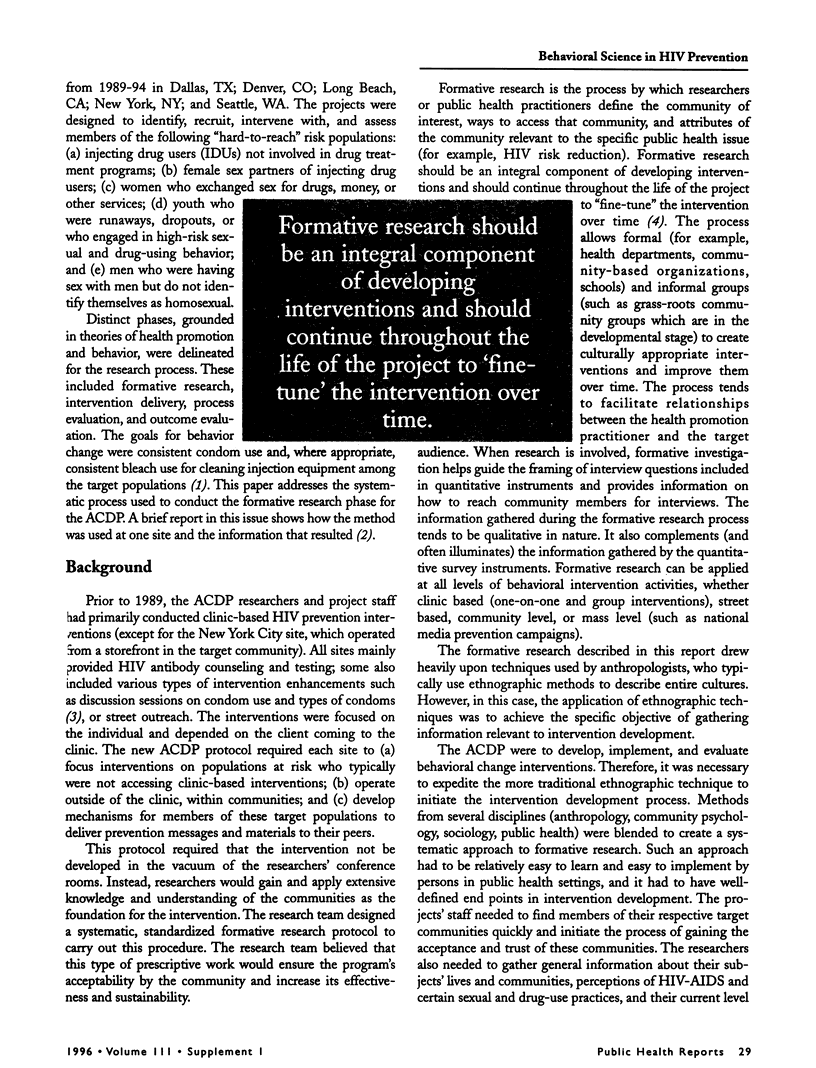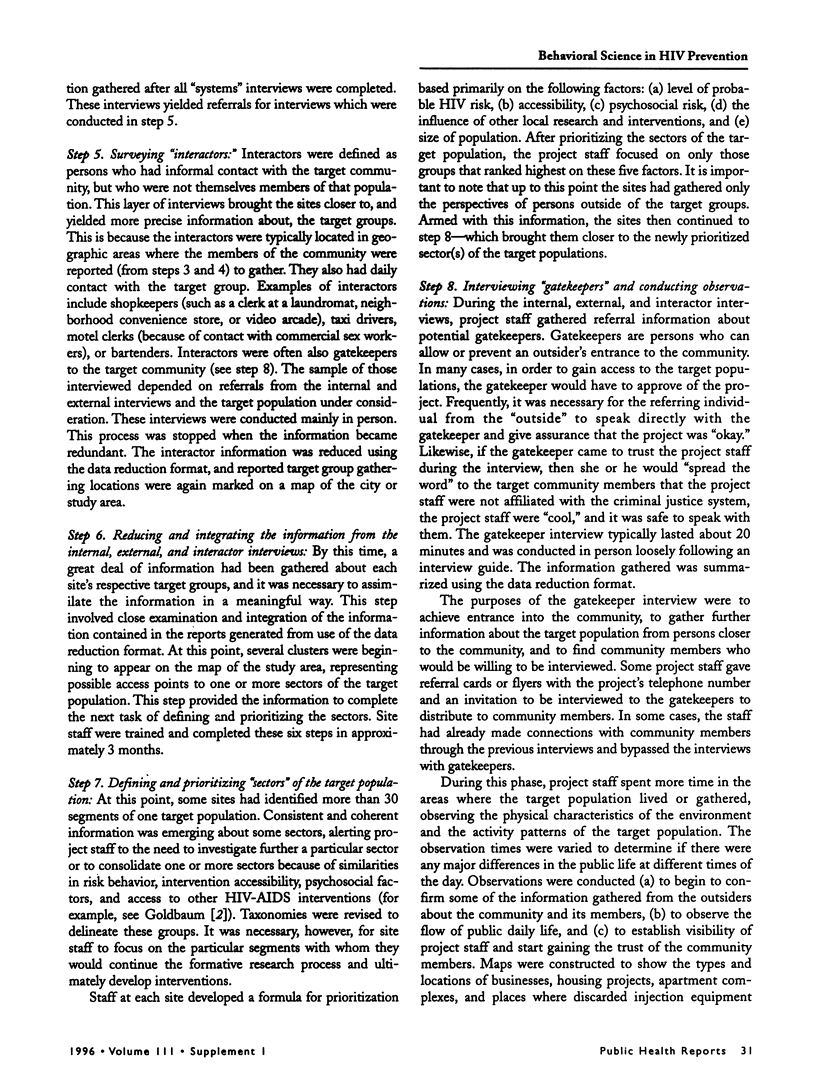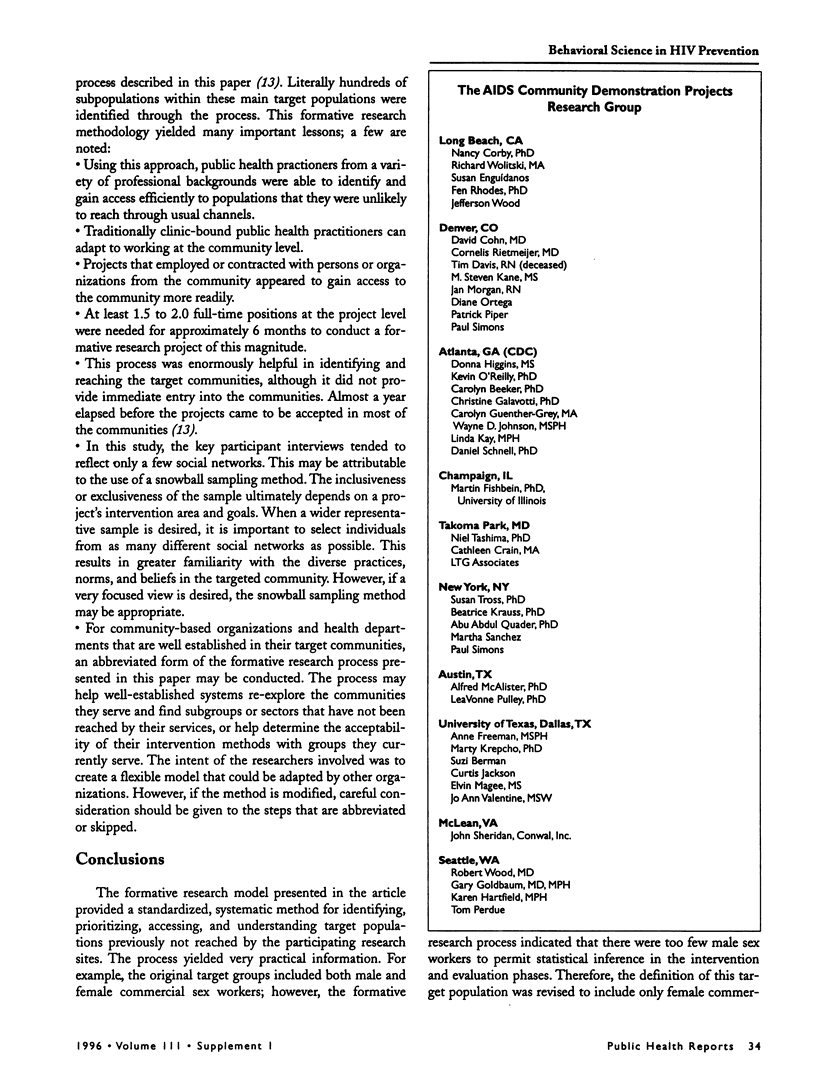Abstract
The AIDS Community Demonstration Projects provided community-level HIV prevention interventions to historically hard-to-reach groups at high risk for HIV infection. The projects operated under a common research protocol which encompassed formative research, intervention delivery, process evaluation, and outcome evaluation. A formative research process specifically focusing on intervention development was devised to assist project staff in identifying, prioritizing, accessing, and understanding the intervention target groups. This process was central to the creation of interventions that were acceptable and unique to the target populations. Intended to be rapid, the process took 6 months to complete. Drawn from the disciplines of anthropology, community psychology, sociology, and public health, the formative research process followed distinct steps which included (a) defining the populations at high-risk for HIV; (b) gathering information about these populations through interviews with persons who were outside of, but who had contact with, the target groups (such as staff from the health department and alcohol and drug treatment facilities, as well as persons who interacted in an informal manner with the target groups, such as clerks in neighborhood grocery stores and bartenders); (c) interviewing people with access to the target populations (gatekeepers), and conducting observations in areas where these high-risk groups were reported to gather (from previous interviews); (d) interviewing members of these groups at high risk for HIV infection or transmission; and (e) systematically integrating information throughout the process. Semistructured interview schedules were used for all data collection in this process. This standardized systematic method yielded valuable information about the focal groups in each demonstration project site. The method, if adopted by others, would assist community intervention specialists in developing interventions that are culturally appropriate and meaningful to their respective target populations.
Full text
PDF







Selected References
These references are in PubMed. This may not be the complete list of references from this article.
- Basch C. E. Focus group interview: an underutilized research technique for improving theory and practice in health education. Health Educ Q. 1987 Winter;14(4):411–448. doi: 10.1177/109019818701400404. [DOI] [PubMed] [Google Scholar]
- Fishbein M., Guinan M. Behavioral science and public health: a necessary partnership for HIV prevention. Public Health Rep. 1996;111 (Suppl 1):5–10. [PMC free article] [PubMed] [Google Scholar]
- Goldbaum G., Perdue T. R., Higgins D. Non-gay-identifying men who have sex with men: formative research results from Seattle, Washington. Public Health Rep. 1996;111 (Suppl 1):36–40. [PMC free article] [PubMed] [Google Scholar]
- Guenther-Grey C., Noroian D., Fonseka J., Higgins D. Developing community networks to deliver HIV prevention interventions. Public Health Rep. 1996;111 (Suppl 1):41–49. [PMC free article] [PubMed] [Google Scholar]
- O'Reilly K. R., Higgins D. L. AIDS Community Demonstration Projects for HIV prevention among hard-to-reach groups. Public Health Rep. 1991 Nov-Dec;106(6):714–720. [PMC free article] [PubMed] [Google Scholar]
- Person B., Cotton D. A model of community mobilization for the prevention of HIV in women and infants. Prevention of HIV in Women and Infants Demonstration Projects. Public Health Rep. 1996;111 (Suppl 1):89–98. [PMC free article] [PubMed] [Google Scholar]


